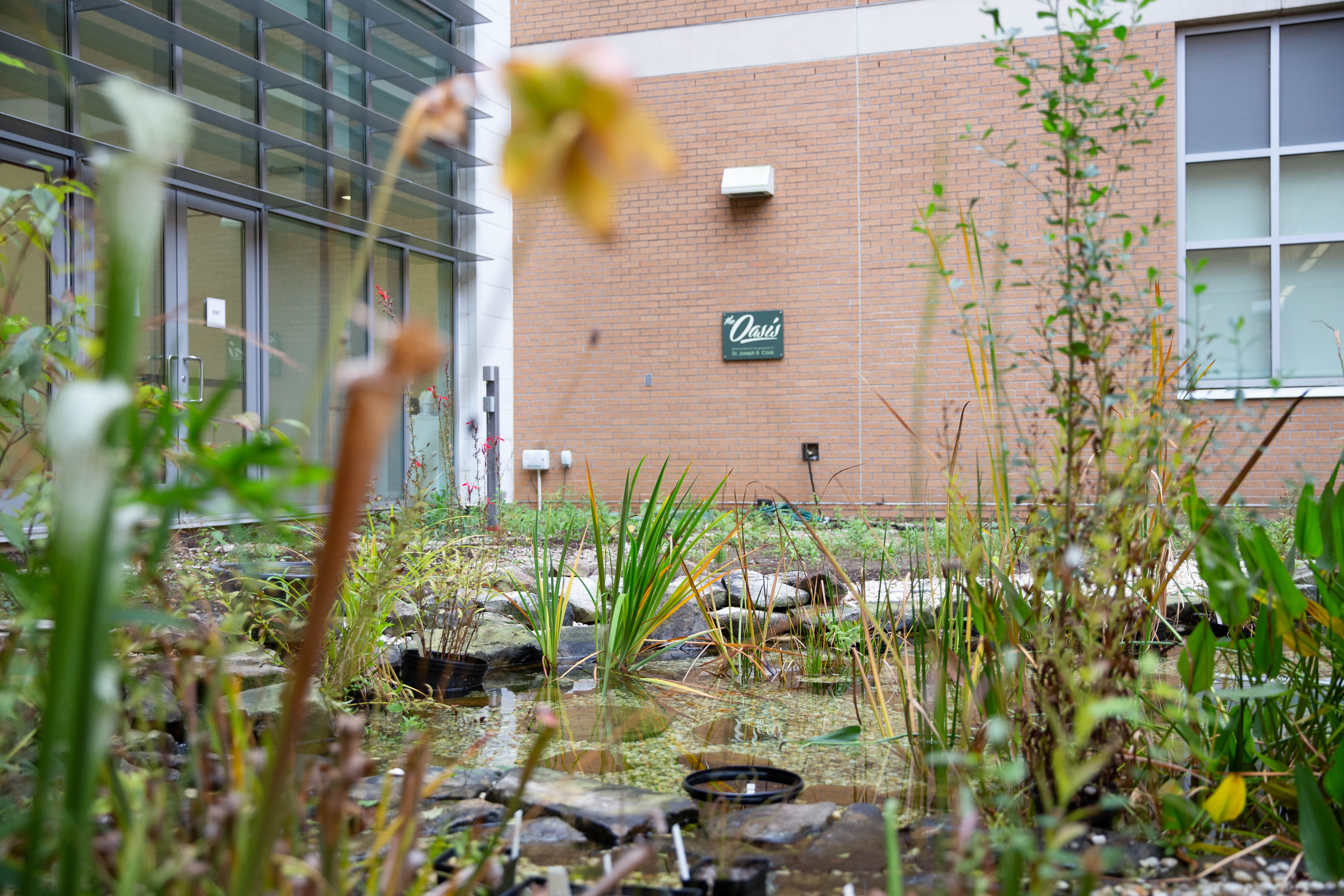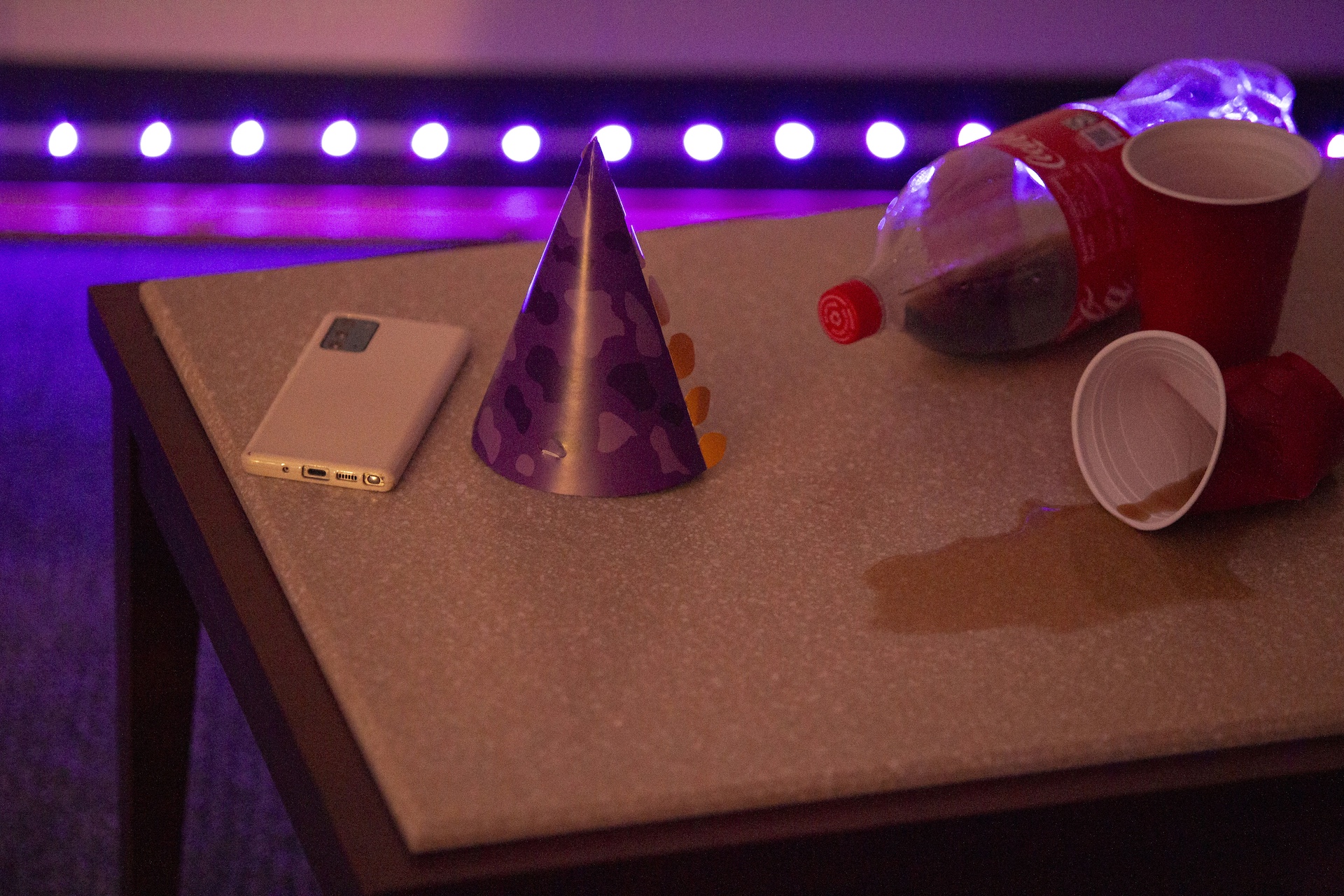As the days grow shorter and colder, Kennesaw State students passing behind the College of Math and Science may long for a place on campus that is not bitterly cold.
The Joyce and Ira Pegues Memorial Greenhouse is a warm and bright conservatory shielded from the chilly temperatures and stormy weather. Located behind the science building on the Kennesaw campus, the greenhouse is home to orchids, mosses and several rare species of plants from across the world.
Dr. Joel McNeal, an assistant professor of biology at KSU, takes care of the greenhouse and spoke about some of the plants it houses. McNeal said that one such rare species is the Amborella trichopoda. This species is more commonly known as the Amborella, a shrub from New Caledonia, a small island off the coast of Australia.
“Every other flowering plant, from grasses to oak trees to magnolia trees to little tiny, floating pond plants — every single other flowering plant in the world is more closely related to each other than [they are] to this one,” McNeal said of the Amborella. “Because of this plant’s uniqueness, it gives us some insight into the ancestor of all flowers and how flowers evolved in the first place.”
Another uncommon plant in the greenhouse is the Welwitschia mirabilis, which grows two spiraling leaves over its lifetime. As the plant is native to the Namib Desert of Namibia in South Africa, it is difficult to keep alive in a greenhouse environment, but the Joyce and Ira Pegues Memorial Greenhouse is home to three of them.
The plants in the greenhouse come from McNeal’s own collection, along with plants from the Atlanta Botanical gardens, the Chattahoochee Nature Center and the University of Georgia. Some KSU professors grow plants in the greenhouse for classes such as Plant Ecology and Biological Principles II.
Usually, the plants die after setting seeds, meaning that plants from the greenhouse are unable to be sold for profit. However, some plants make their way to the Oasis, a courtyard nestled between the Science Building and Science Laboratory Buildings.
The Oasis, left largely in the hands of attentive faculty members such as McNeal, has a pond that hosts several species native to the Southeast. Members of the faculty have added different species of fish, including tiny mosquitofish and large sunfish.
The faculty have worked to keep the fauna in the Oasis as close to a bog’s natural conditions as possible, meaning no pet turtles or fish are allowed near the area. While there has been word of setting up a walkway over the years, McNeal said any plans for official landscaping of the courtyard are uncertain.
“Eventually, I’d like to landscape that whole area out there with native plants and be able to use that for teaching,” McNeal said.
For now, the Oasis remains like the plants in the greenhouse, a hidden beauty on campus that requires the right conditions and appreciation to thrive.
For more information about the greenhouse and Oasis pond, contact McNeal at jmcneal7@kennesaw.edu or visit http://csm.kennesaw.edu/research/greenhouse.php.



